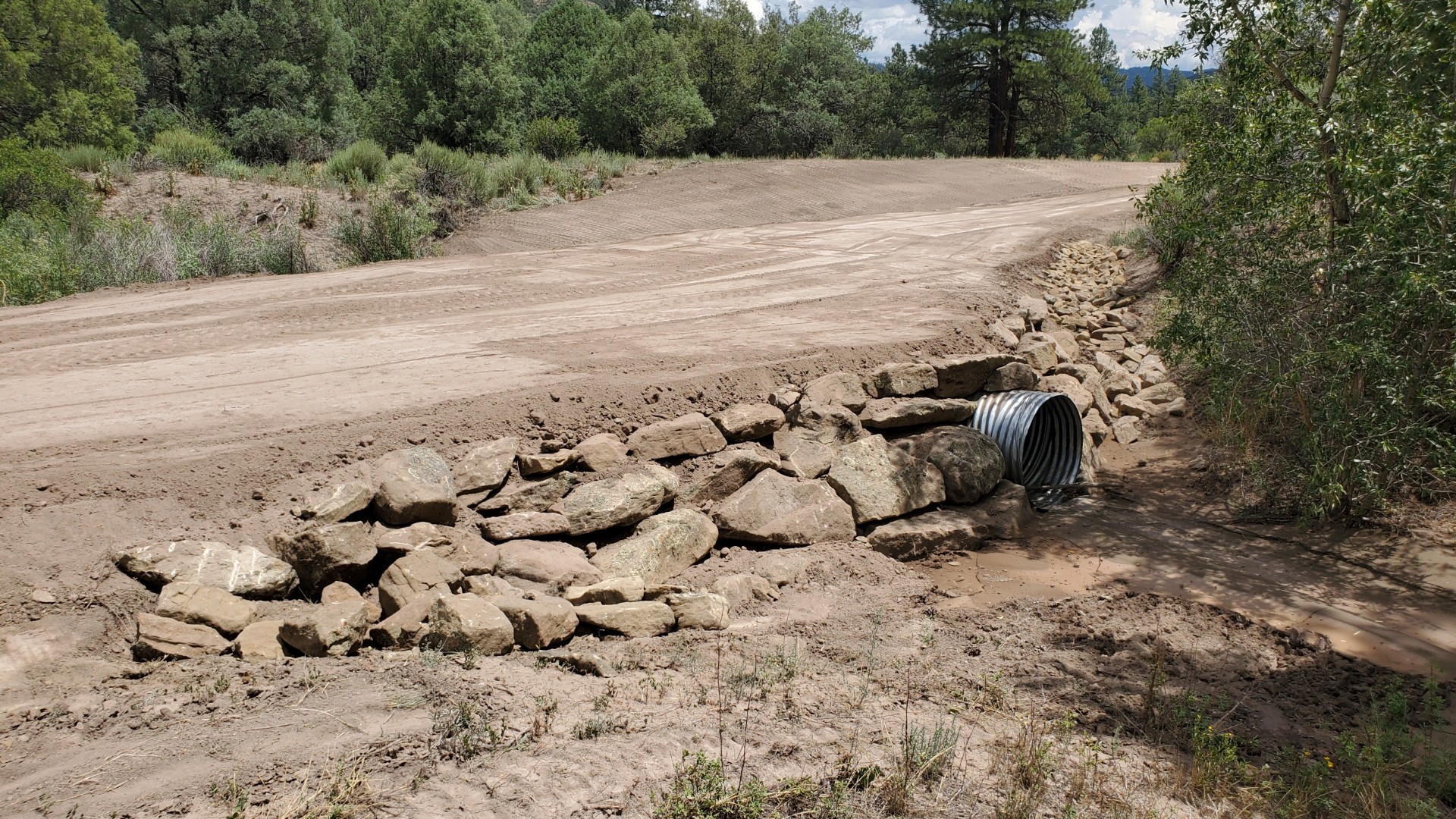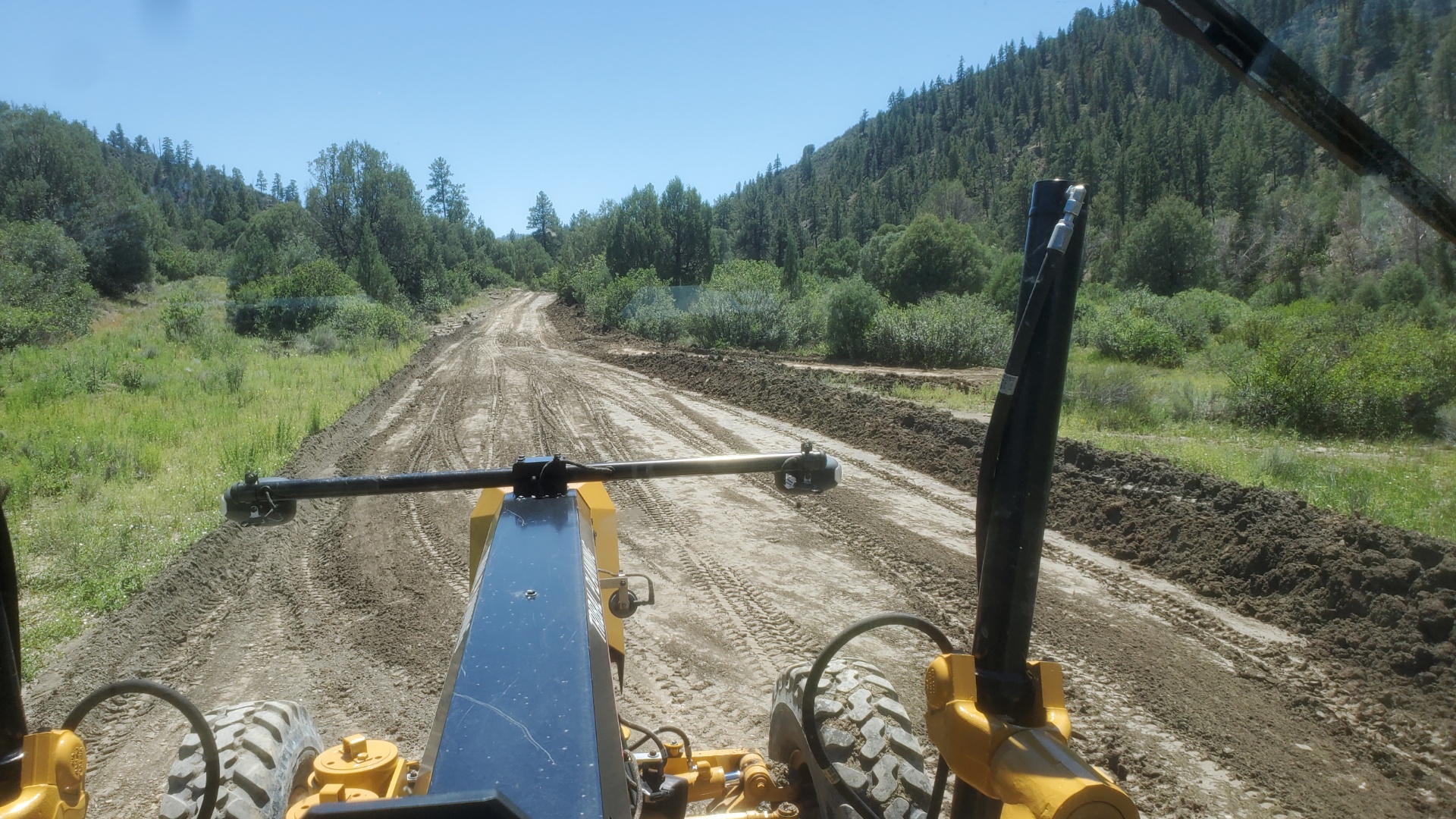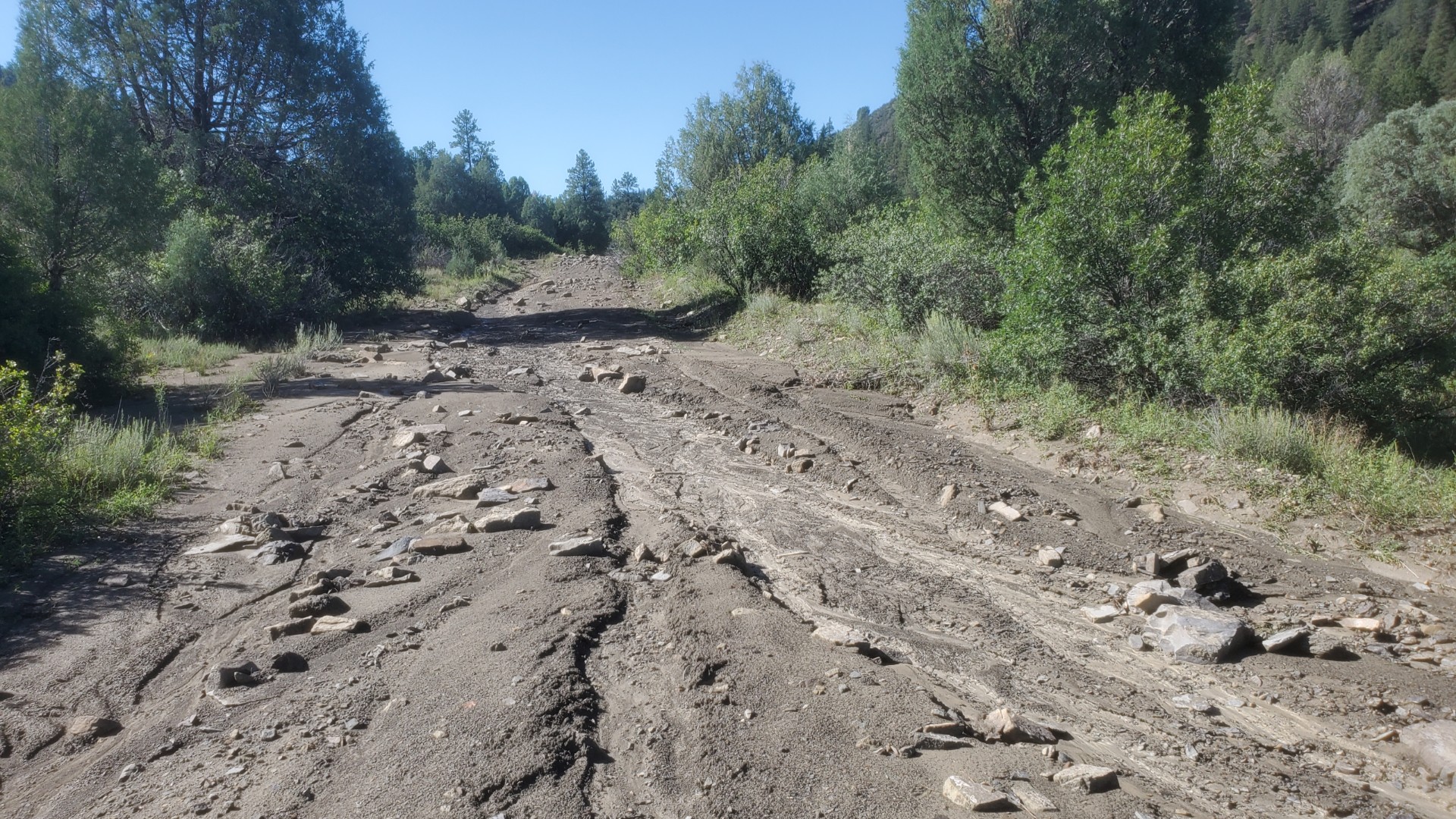As the summer monsoon rains end and the leaves begin to change, tribal hunters prepare for the upcoming season. For the Southern Ute Tribal Planning Department, the coming fall season raises concerns over access to these traditional lands due to deteriorating roads on the reservation.
Tribal member and Construction Services Heavy Equipment Supervisor, Matthew Box is working on a project in collaboration with Tribal Planning to grade rural roads and access points within Deep Canyon on the eastern side of the Southern Ute Reservation. The project started on Wednesday, July 20 and is expected to end early this fall.
The last time a similar program was conducted was about eight years ago by the Bureau of Indian Affairs (BIA). Since then, the Southern Ute Tribe and BIA did not have the proper equipment to properly maintain these rural roads.
“There’s 800 miles on the reservation,” Tribal Planner Douglas McDonald explained. “About 150 miles of state highways, about 400 are county roads, about 200 miles that are tribal or BIA roads— it’s a joint responsibility of the BIA agency and the tribe.”
The Southern Ute Planning Department has introduced the Transportation and Maintenance Program to begin work on repairing and maintaining existing roads, with financial assistance from the BIA, within the interior reservation boundaries. The department aims to fix and maintain 10 to 40 miles of BIA and Southern Ute Reservation roads a year throughout the interior boundaries.
To help maintain roads, the Planning Department purchased a brand new 2022 Caterpillar 120AWD motor grader for projects within the Tribe. One of the first projects to use the equipment, included the grading of the road to the Sundance Grounds by Matthew Box who is certified to operate the motor grader.
“When it did finally come in [the motor grader] the Tribal Planning Department thought about the reservation,” Box said. “I am proud of the direction the Planning Department had with the very first groundwork [of the grader].” Box explained that the Tribal Planning and Construction Service Division has a mutual agreement to use the grader on similar projects. The most recent project has been the Deep Canyon grading project which is expected to fix BIA and tribal access roads — finishing up once they reach County Road 151.
With the newly acquired grader, Box is able to fix the deteriorating roads with ease and create a “crowned” surface after grading the road — so water can easily shed off into side ditches. The main goal after plowing is to make sure it maintains a gravel like quality within three to four inches of new and existing surface materials. Over time, dirt roads lose this crowned middle surface and revert to a flatter shape. A flat surface does not allow water to flow off very easily and can cause large ruts once larger vehicles use to the roads.
“This wouldn’t occur if the roads surface had been drained well,” McDonald said. “And that’s what a grader does the best. It shapes the road’s surface better than any other piece of equipment, so that the water quickly drains off into the side and stays in the ditches.”
One of the biggest challenges to this project has been the higher amounts of rain within this year’s monsoon season. The fluctuation of rain patterns has halted progress on the project, as Box is unable to plow the roads if they are too wet as that often makes the roads worse. The danger of lightning strikes has also been a concern. “There has been a decent amount of moisture this season. It’s been hit and miss,” Box said.
While the rain has halted some progress, the main goal of this project is to help those tribal members and elders access those roads to get home, to get to their land assignments, and to those traditional and sacred places important to the Tribe. According to Box – when these roads were initially established – their main goal was for them to be used as access points for these areas. As time moved forward, the roads fell out of disrepair due to the lack of funding or machinery.
The Tribal Planning Department wants to ensure that roads will properly be maintained in the future with the help of the newly introduced Transportation and Maintenance program. The program will help allocate funding and provide machinery for projects like the Deep Canyon project and the recent development with the Cedar Point Housing Road Improvement Project.
“It’s always my goal to provide a safe road for generations to come,” Tribal Planning Project Coordinator, Mary Evening Star Eagle said. “It’s not just for here and now. It’s for our future hunters; it’s for future family members; it’s for our future cultural resources — we’re the people of the land.”






